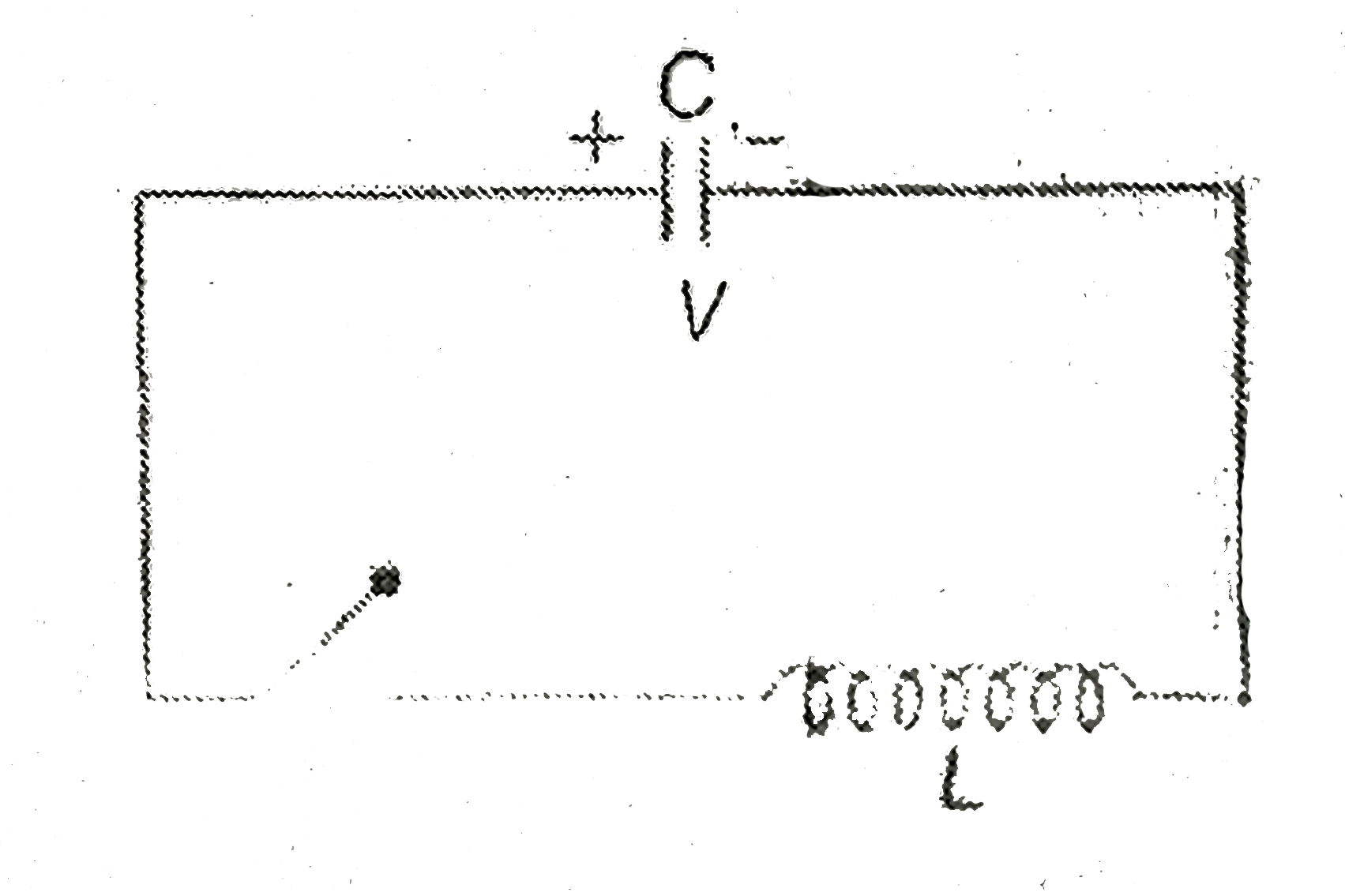A condenser of capacity C is charged to a potential difference of V1. The plates of the condenser are then connected to an ideal inductor of inductance L. The current through the inductor wehnn the potential difference across the condenser reduces to V2 is
[(C(V1−V2)2)]12
C(V21−V22)L
C(V21+V22)L
[C(V21−V22)L]12
The correct Answer is:D
In case of oscillatroy, discharge of a capacitor through an inductor, charge at instant t is given by
q=q0cosωt
where ω=1√LC
∴cosωtqq∘=CV2CV1=V2V1(∵q=CV)………i
Current through the inductor
I=dqdt=ddt(q0cosωt)=−q0ωsinωt<br>|I|-CV_(1)1/(sqrt(LC))[1-cos^9(2)omega t ]^(1//2)<br>V_(1)sqsrt(C/L)[1-((V_(2))/(V_(1)))^(2)]^(1//2)=[(C(V_(1)^(2)-V_(2)^(2)))/L]^(1//2)
[(using (i))]
Topper's Solved these Questions
Similar Questions
A capacitor of capacity 2μF is charged to a potential difference of 12V. It is then connected across an inductor of inductance 6μH. What is the current (in A) in the circuit at a time when the potential difference across the capacitor is 6.0V?
View SolutionA capacitor of capacity 2μF is changed to a potential different of 12V . It is then connected across an inductor of inductance 0.6mH What is the current in the circuit at a time when the potential difference across the capacitor is 6.0V ?
View Solution
Knowledge Check
A condenser of capacity C is charged to a potential difference of V1. The plates of the condenser are then connected to an ideal inductor of inductance L. The current through the inductor when the potential difference across the condenser reduces to V2 is :-
A[C(V1−V2)2L]12BC(V21−V22)LCC(V21+V22)LD[C(V21−V22)L]12A condenser of capacity C is charged to a potential difference of V1. The plates of the condenser are then connected to an ideal inductor of inductance L. The current through the inductor when the potential difference across the condenser reduces to V2 is
A(C(V1−V2)2L)1/2BC(V21−V22)LCC(V21+V22)LD(C(V21−V22)L)1/2An ideal capacitor of capacitance 0.2μF is charged to a potential difference of 10V. The charging battery is than disconnected. The capacitor is then connected to an ideal inductor of self inductance 0.5mH. The current at a time when the potential difference across the capacitor is 5V is :
A0.34AB0.17AC0.25AD0.15A
A capacitor of capacitnace C is charged to a potential difference V and then disconnected from the battery. Now it is connected to an inductor of inductance L at t=0. Then

View SolutionA capacitor having capacitance 2 μF is charged to a potential difference of 50 V. it is then diconnected from battery and connected to an inductor of inductance 5 mH. Peak current that flows through the inductor is
View SolutionA parallel plate air condenser of capacity 4μF is charged to a potential of 1000 V. the energy of the condenser is
View SolutionA parallel plate air condenser of capacity 10μF is charged to a potential of 1000V. The energy of the condenser is
View SolutionA condenser charged to a potential of 200 V, has the energy of 1 joule. The capacity of the condenser is
View Solution
